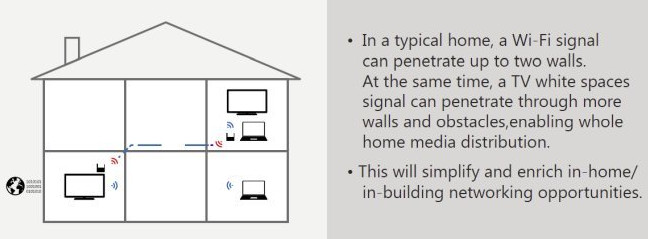TV whitespace spectrum represents the frequencies unused by analog TV channels either because noone is broadcasting at a given frequency or because of analog TV sunset. There are plans to use this free spectrum for the Internet of Things with Weightless, but instead Microsoft plans to leverage this new bandwidth for Internet access in remote areas.
 There are some hurdles to this technology as government must approve use of TV whitespace spectrum for use other than TV signals, and the receiver is now rather expensive at $1000, but Microsoft expects the price to come down to around $200.
There are some hurdles to this technology as government must approve use of TV whitespace spectrum for use other than TV signals, and the receiver is now rather expensive at $1000, but Microsoft expects the price to come down to around $200.
The advantage of TV frequencies is that they can be used over long distances, and easily penetrate through walls. The company has apparently started working on the technology since the end of 2012, and they now have pilot programs in various countries including the US, the UK, Jamaica, Namibia, Kenya, Taiwan and others.
Those projects have been running for some time, but this is now news because the technology will be/has been demonstrated in New York today, with the service becoming available in 12 states in the US soon, not from Microsoft directly, bu via local ISPs.
Via Liliputing.

Jean-Luc started CNX Software in 2010 as a part-time endeavor, before quitting his job as a software engineering manager, and starting to write daily news, and reviews full time later in 2011.
Support CNX Software! Donate via cryptocurrencies, become a Patron on Patreon, or purchase goods on Amazon or Aliexpress




